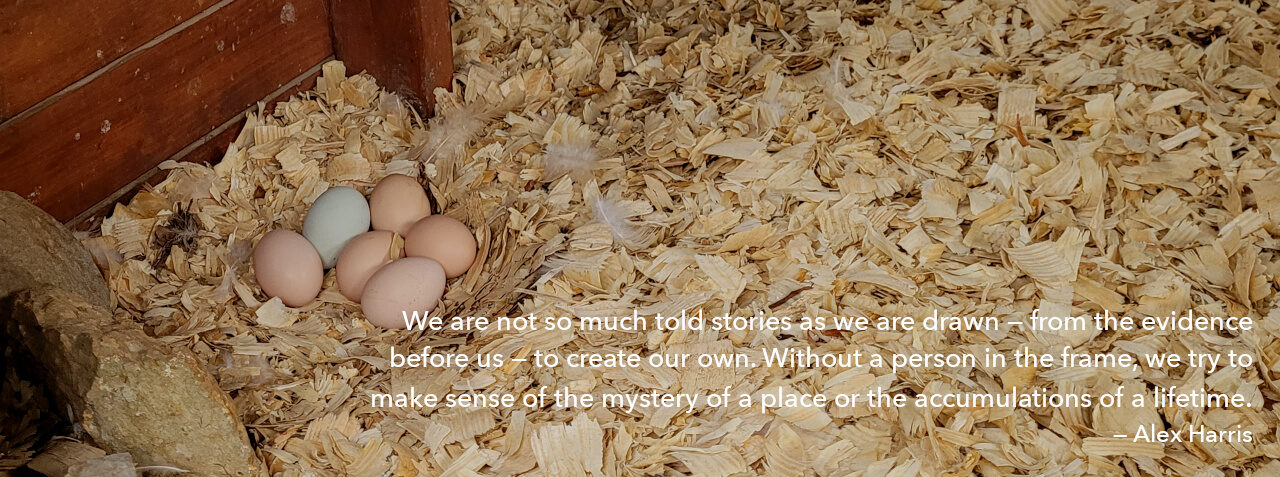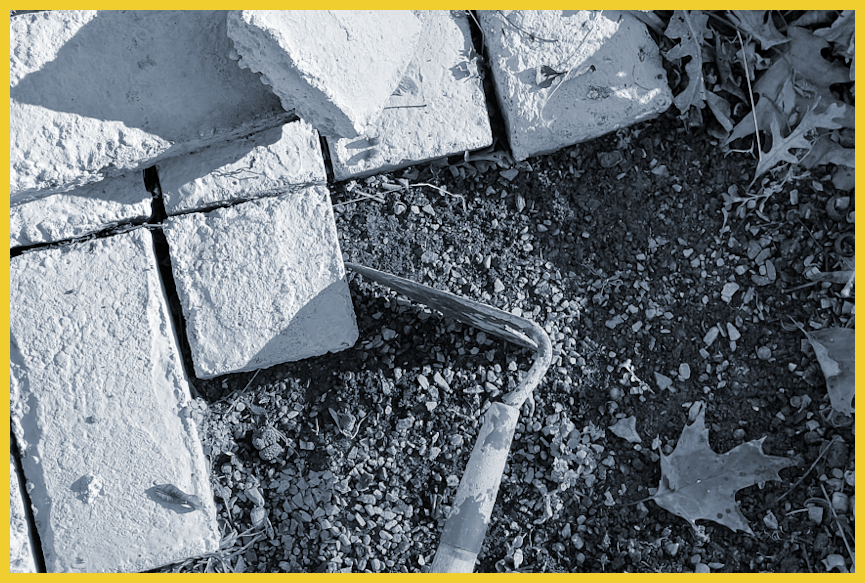I first learned of Bernadette Mayer’s Memory in September 2020 when I read a New Yorker review of the book version published by Siglio Press in May, nearly fifty years after the work originally appeared. The book represents Mayer’s February 1972 art exhibition of the same name — an exhibition that resurfaced in the mid-2010s. An edited version of Memory‘s narration along with a few photographs appeared in book form in 1975 from North Atlantic Books (now a rare and expensive edition).
But the execution of Memory has most intrigued me: During July 1971, Mayer took a thirty-six exposure roll of 35mm film every day, processing them at night, and during the time kept a daily journal. The original gallery show consisted of 1,116 photographs and a recorded reading of the journal — a recording that lasted nearly seven hours.
Could the “Memory model,” as I call it, be reapplied? What might a new project reveal, if anything? And how might the framework itself change? Mayer’s work is not aimed at solving a problem, probably. Dan Chaisson explained that “Mayer wanted Memory to serve as a time capsule, its meaning deferred until a future, or a range of futures, that she couldn’t have foreseen.” The work is “definitional,” as Chaisson put it, defining memory; “that’s why it’s not called ‘Memories’.” My use of the model — photographs and narrative — tends in a more problem-centered or a personal direction. I will use the model in January 2021 to explore a transition from regular working-life, with its rituals and routines, to “retirement,” a word that poorly describes sets of projects, routines, and directions that many take up later in life before they’re utterly exhausted.
We know transitions well — we have defined them, even though we sometimes or often don’t navigate them well. We have experienced them profoundly over the past year, and they are a regular feature of modern working life, which seems an accelerating whirl of changes.
Although photography enthusiasts and professional photographers continue to praise “real film photography,” I would hesitate to go back to loading film in my old Nikon. I remember that taking pictures in the days of film included a certain amount of exertion — or at least organization. You had to get the film developed, unless of course you were enough of a photographer to have your own darkroom in the basement. (As a kid, I did have one, and I spent hours there, sometimes successfully.) Most photography from my adult years — including, no doubt, many family pictures — gathered, undeveloped, in dresser drawers or downstairs in the kitchen junk drawer. I still have undeveloped rolls of Fujifilm, now woefully past their expiration dates.
I’ll stick with digital photography, thank you very much. If I yearn too much for the days of grainy images or odd flares in color shots, I’m sure there’s a digital filter that can do the job.
Taking photographs has also changed significantly since 1971, when Mayer took her Memory shots. It has become less a matter of problem solving (f-stops and focus) and certainly less costly. Mayer no doubt had a plan or a purpose for each roll, if not for each shot. Imagine you’re taking regular 35mm film shots. Thirty-six photographs every day ends up being a lot of pictures. For a twelve-hour day, you’d take a picture every twenty minutes on average. For a sixteen-hour day — a long day, it seems — you’d snap one every half-hour or so, many in the dark if you’re not already having to deal with a flash or extended exposure for an indoors shot.
By contrast, my phone can handle many, many more exposures than just thirty-six on a roll. Its camera adjusts itself to light conditions and even makes assumptions about which area in a frame should be sharply focused. After a shot has meandered to Google, I might have an automated retouched image appear. Certainly, this technology undermines artistic control, and the experience of taking the shot ends up being vaguely artless, or at least harder to call a matter of art. You only point to “make up the composition”; the camera and downstream automated minions, most of the time, do the rest.
The Memory model ends up feeling rather automatic in the 2020s with digital camera technology. So, the question: Does Instagram preempt the Memory model?
It’s not just technology, either. The cultural milieu has shifted, and that may make a replay of a 1970s Memory model a bit more problematic. In its 1970s way, Mayer’s Memory approximated a method of Instagram without all of the social media baggage which, after all, is really at the heart of Instagram. (Chaisson commented that Mayer’s work seemed “a kind of analog Internet.”) Mayer’s photographs — systematic, serial, and at a thirty-six-a-day pace — lay out pieces of memory of a month. The work’s artistry, of course, also relies on poetic narrative, but the images focus us, just as Instagram images do today.
If she’d peek at Memory (I have little hope in that), Kim Kardashian West would understand the method, but she’d disdain the production qualities. Instagram captures moments — selfies, vacation picts, plates of food, derrieres — in an obsessive socially networked way, with #nofilter or filter. Instagram is photo-rich in a way that Mayer’s daily thirty-six pictures faintly (and fadingly) approximates, though Mayer’s 1970s approach is disciplined by constraints of the medium. The total number of photographs Mayer took is respectable even by Instagram standards, too. She snapped over 1,100 pictures, which, purchased and processed, amount to a chunk of change when you’re twenty-six years old in 1971.
Now in the digital 2020s, why not apply the Memory model to the Instagram framework? I considered it, but I realized that the model wouldn’t prevail. Instagram would. This would happen: The Instagram framework would be applied to the Memory model. It’d be bad Instagram, and it’d be a bad Memory model.
I had been hoping to use the disciplined, thirty-six exposure method to lay open some matters that might otherwise be obscured from “normal” sight of the everyday. I wanted the photography and the writing to, well, focus and direct attentions to new and lurking realities of my new situation. Instagram’s setup isn’t about revealing, but rather Instagram enshrouds images behind other motives. Even at its best, Instagram is a pretty good way to “refuse” reality, rather than reveal it. Susan Sontag probably pointed out the nub of the matter, at least in travel photography, which of course is a major chunk of Instagram. In On Photography, Sontag wrote, “A way of certifying experience, taking photographs is also a way of refusing it — by limiting experience to a search for the photogenic, by converting experience into an image, a souvenir. Travel becomes a strategy for accumulating photographs. The very activity of taking pictures is soothing, and assuages general feelings of disorientation that are likely to be exacerbated by travel.”
So, the Memory model for Second Act won’t be an Instagram show, which technically would be easier to accomplish. But the choice won’t fall back to the pure 1970s Bernadette Mayer approach either, mainly because digital photography has shifted the cultural landscape of imagery so profoundly. I tend to think about this in terms of form: a sonnet, for example, has a fairly strict form that sonnet writers abide by, and their art expresses not only their thought but how well they can explore the form of the sonnet. In a sense, sonnets are “about” the sonnet, formally at least. Mayer’s photography in July 1971 worked within the constraints of film, exposure number for her being perhaps the strictest boundary. Her choices explored the edges of that numerical boundary and the capabilities of 35mm film technology. The artistry of Mayer’s Memory, like the artistry of the sonnet, abides, and today other forms beg for attention.
In January 2021 the Memory model works without the constraint of number and within an imagery-saturated culture. For Second Act, the number of “exposures” constrains because of magnitude — they are a copious, overwhelming plentitude. What in 1971 was Mayer’s single camera becomes for me multiple cameras — really image capturing devices. Instead of thirty-six images a day, hundreds of images could be gathered every day in January 2021.
Composition be damned, let the cameras overflow, pick the “best.” And worry about what is, actually, the “best.” Choosing implies narration, something that Mayer no doubt herself considered in her daily journal. My new choices will tilt the steering that narration accomplishes slightly to toward imagery. Imagery, having been selected, exerts some control on the narrative and even could endanger the story by reducing it to serial images, comic book style. (Or Instagram style.)
Writing in The New Yorker on “What are Artists For?” Peter Schjeldahl observed that “Art happens when someone wants to do it. Advertising and propaganda start from given ends and work backward to means.” I shrink from the presumption of being an artist, but I think that what might proceed in January 2021 will not be a matter of grinding an axe or pushing a view or a product. Lord knows I have too many conflicting views already in major matters of life to become, in one short month, some sort of true believer. The trouble, if it actually is trouble, that Second Act explores is a substantially a matter of absence. Time, space, projects, and what I called “grace” all seem to be important to survey the absences and transform them. These categories form the initial bins into which I’ll place the experiences I gather and choose. I don’t know if they alone will be sufficient or useful.
Schjeldahl’s observation is worth taking to heart. The mere fact that I select imagery highlights that it is edited, scrubbed, shaped, and placed into some modest sausage-grinder for narrative. Paradoxically, Mayer’s restraint on number, enforced by the limits of the 35mm roll of film, drew tighter reins on whatever license and editing she may have had, post exposure. I have fewer constraints and perhaps more peril of falsification and fiction.
I also know that the audience is Instagram’ed, so to speak. It demands spectacle in ways that Mayer’s genteel gallery-audience probably wasn’t. So there is a pressure to appeal, probably far more forceful than was the case in the 1970s.
I started this project after being inspired by the simplicity of Mayer’s mode of executing her work in 1971-1972. I hoped as well that the simplicity of photographs and words would unpack and reveal more easily some facts and positions of transition to a Second Act — my second act, or really anyone’s. I end my preliminary thinking with greater caution and an awareness of the Memory method’s limits in 2021. Sontag writes, “The limit of photographic knowledge of the world is that, while it can goad conscience, it can, finally, never be ethical or political knowledge. The knowledge gained through still photographs will always be some kind of sentimentalism, whether cynical or humanist. It will be knowledge at bargain prices — a semblance of knowledge, a semblance of wisdom.”
Sontag wrote as Mayer was taking snapshots. The two stances oppose, it seems to me. I’m hoping that the words and the images of January 2021 might avoid sentimentalism, perhaps words and imagery steeling each other as each day passes.
— Mark R. DeLong, December 30, 2020

